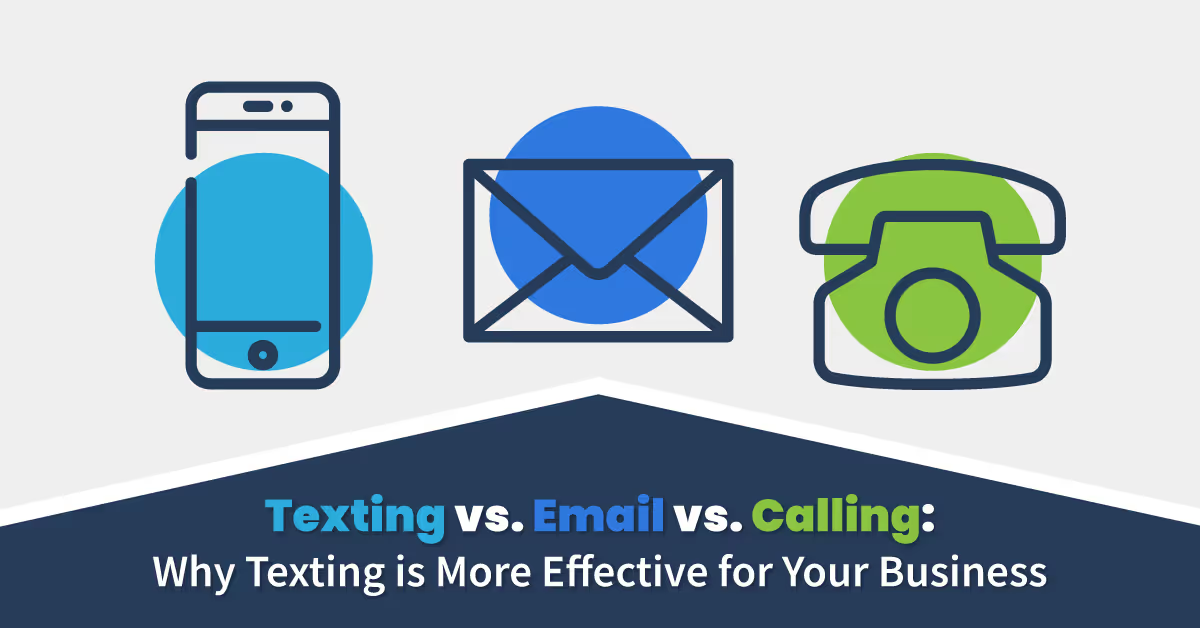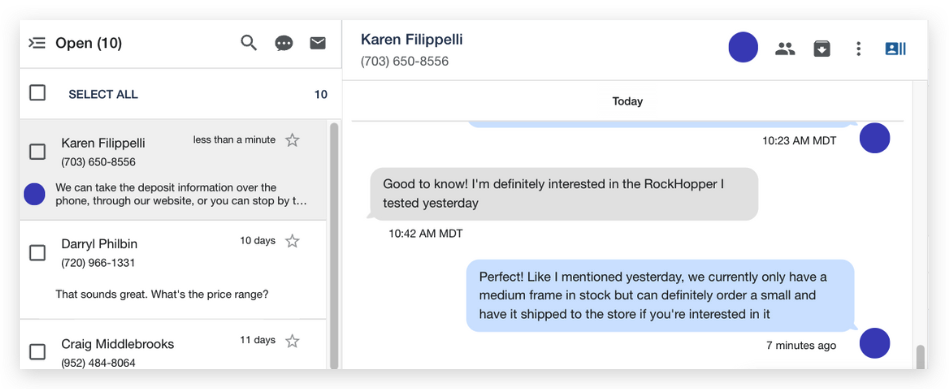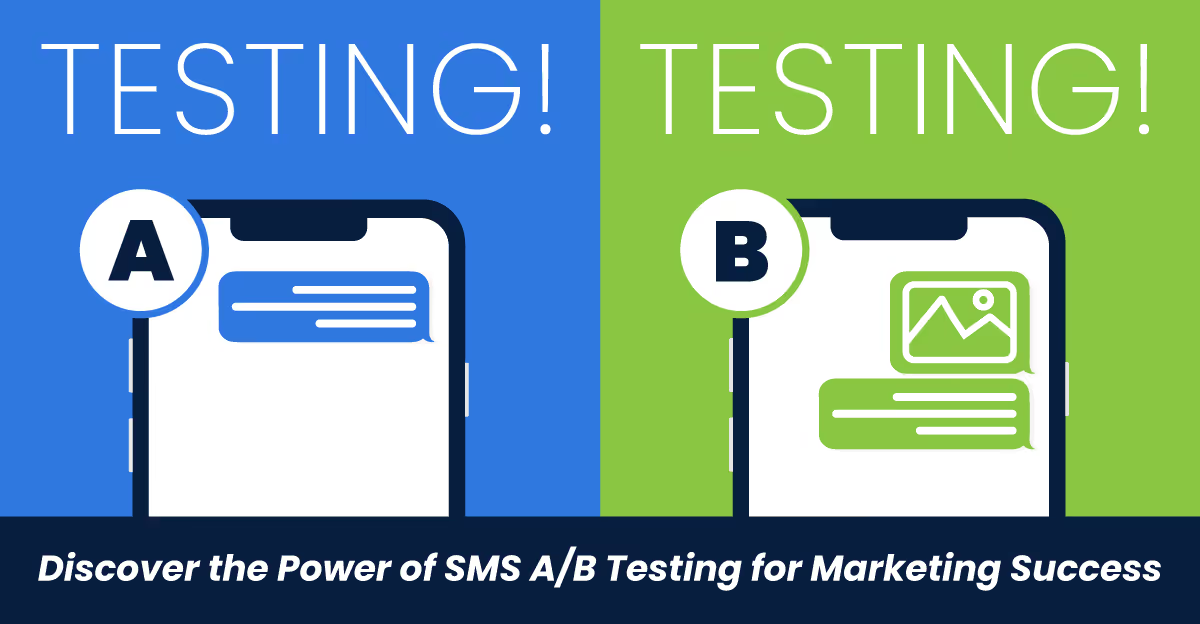Texting vs. Email vs. Calling: Why Texting is More Effective for Your Business

In the high-stakes world of business where every second counts, your communication methods can either make or break a deal. As professionals, we are often overwhelmed by the plethora of tools at our disposal — email, phone calls, video conferences, and the list goes on. Each comes with its set of advantages and disadvantages, but as the digital landscape continues to evolve, texting emerges as a communication powerhouse that simply cannot be ignored.We'll dissect the effectiveness of texting in business compared to the traditional methods of calling and email. It's time to understand why incorporating a business texting strategy like TextUs may just be the game-changer your sales, marketing, and HR teams have been waiting for.
SMS - The Speed and Personalization Game-Changer

If there’s one thing the modern business world is defined by, it’s the need for speed and efficiency. In a society accustomed to instant gratification, text messaging stands head and shoulders above the other formats due to the speed at which you can deliver a message. This capability is especially beneficial in scenarios requiring last-minute changes or time-sensitive information sharing.The personalization aspect of texting is also a crucial factor. Given the informal nature of the medium, business text messages can move away from the sterile language of emails and overly formal tones of voice calls to create an authentic, direct, and personable connection. Clients and prospects who receive personalized, time-sensitive texts might feel more valued and, in turn, be more responsive toward your business.Research suggests that text messages have a 45% chance of receiving a response, making it a potent tool when time is of the essence. Compare this with the average voicemail response rate, which hovers at a modest 4.8%, and it's clear that texting is the undisputed king for immediate follow-ups and responses.
Phone - The Personal But Intrusive Alternative

The act of calling in business communications is deeply personal. It allows for real-time conversations that facilitate true connection beyond the pixels on a screen or the alphabets on a keyboard. This direct line of engagement can sometimes bridge gaps that texts and emails, with their limited emotional conveyance, might need help to fill.However, calls can be intrusive, especially when not planned. In a study, 47% of professionals reported that 'uninvited' calls were their biggest work distractions. These calls may land you on the recipient’s voicemail, leading to a game of phone tag that can drag on and erode precious time.
The Call of Connection and Its Challenges
While a calling approach can be effective for some, in the fast-paced world of business, it often comes down to whether the pros of live conversation outweigh the cons of potential interruptions and time constraints.The barrier of voicemail can make phone calls a time-consuming alternative. The average length of professional voicemails is about 63 seconds, a time that could potentially be saved with a concise text message.
Email - The Formal and Often Frustrating Choice

Email has long been the cornerstone of business communications, primarily due to its formality and the documentation it provides. It’s an excellent tool for formal invitations, contracts, and other detailed exchanges that necessitate a record of communication.However, email can often become overwhelming. The average professional spends 2.6 hours per day reading and answering emails, which can lead to important business messages being lost in the noise. The response rates for emails also typically peak at around 22%, a number that, while not negligible, lags significantly behind the immediacy of text responses.The issue of spam further dilutes the effectiveness of email. With important communications getting buried under newsletters and promotional emails, the reliability of email as a primary business communication tool is questionable at best.
Why Texting Stands Out
When we look at texting, calling, and emailing in comparison, it's evident that each format has its merits. But in the grand scheme of business strategy, it's the capability to adapt, be agile, and fulfill the evolving needs of clients and employees that set texting apart.Text messaging's capacity for immediate engagement, elevated personalization, and high open and response rates fortifies its position as the ideal tool for businesses in the digital age. Though calling and emailing have their place, when it comes to cutting through the clutter and getting results, texting proves to be the most effective medium time and time again.
The Empowerment of Text Messaging in Business
In the ever-evolving landscape of business communication, the tap of a fingertip has come to signify a power that cannot be underestimated. As we say farewell to the cumbersome practices of the past, now is the time to leverage the immediacy and intimacy that text messaging brings to the table.If customer satisfaction, employee engagement, and operational efficiency are at the core of your business vision, then SMS texting services should find a place at the heart of your communication strategy. TextUs, with its tailored features and intuitive interface, paves the way for a future where business interactions are seamless.It’s time to make the switch. Equip your teams with the tools that can turn every message into an opportunity and every text into a success. The texting revolution has begun – don’t get left typing. Engage with TextUs today to see how we can transform the way you do business.

Continue Reading
Business Texting
Built for Results
Create and convert pipeline at scale through industry leading SMS software


.png)

